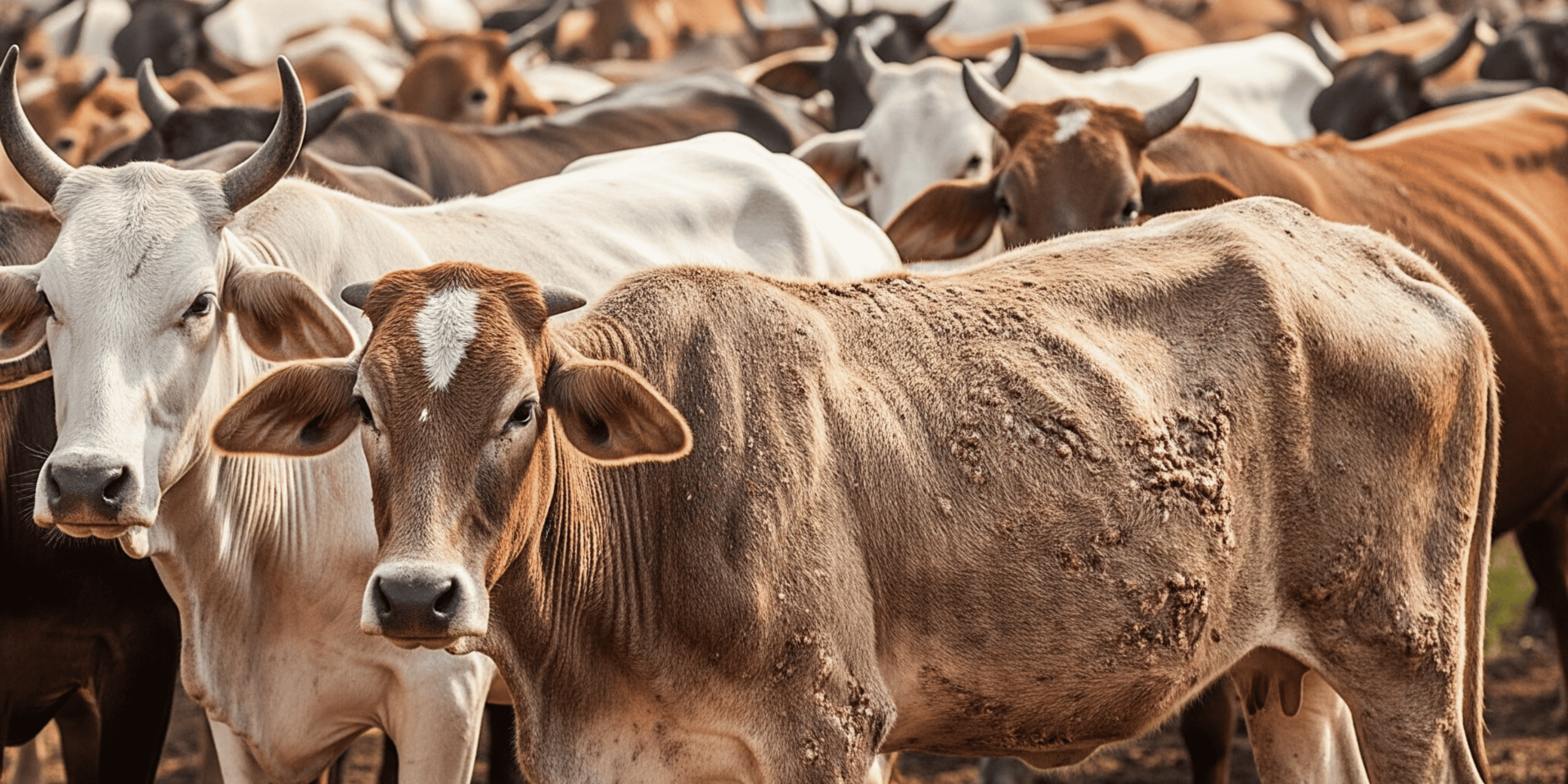
Ruminants
Dermatophilosis in Cattle
Dermatophilosis in cattle, commonly referred to as rain scald or rain rot, is a bacterial skin infection caused by Dermatophilus congolensis. This condition predominantly affects youngstock but can occur in cattle of all ages, especially during prolonged wet weather conditions. The disease is characterized by distinctive skin lesions and can significantly impact cattle health and productivity.
Causes of Dermatophilosis in Cattle
The primary causative agent of dermatophilosis in cattle is the bacterium Dermatophilus congolensis. This organism thrives in moist environments, making cattle more susceptible during rainy seasons. The bacterium penetrates the skin through minor abrasions or insect bites, leading to infection. Factors such as poor shelter, overcrowding, and inadequate hygiene can exacerbate the spread of the disease.
Clinical Signs and Symptoms
Bovine dermatophilosis in cattle presents with distinctive clinical signs:
- Initial lesions appear as moist, circular patches with matted hairs, giving a “paintbrush” appearance.
- Commonly affected areas include the muzzle, ears, withers, and back.
- In severe cases, lesions can coalesce, covering extensive skin areas.
- Despite skin involvement, cattle often remain systemically healthy without fever or appetite loss.
Early detection is crucial to prevent widespread skin damage and secondary infections.
Diagnosis
Diagnosis of dermatophilosis involves clinical examination and laboratory tests. Microscopic evaluation of skin scrapings can reveal the characteristic branching filaments of D. congolensis. In some cases, culture and sensitivity tests may be conducted to confirm the diagnosis and guide treatment.
Prevention Strategies
Preventing dermatophilosis involves mitigating risk factors and enhancing cattle resilience:
- Shelter Provision: Ensure adequate shelter to protect cattle from prolonged rain exposure.
- Pasture Management: Avoid grazing in areas prone to waterlogging or with dense vegetation that retains moisture.
- Insect Control: Implement measures to reduce biting insects that can create skin breaches.
- Hygiene Practices: Regularly clean and disinfect equipment and facilities to minimize bacterial contamination.
By adopting these practices, farmers can significantly reduce the incidence of bovine dermatophilosis in cattle.
Conclusion
Dermatophilosis in cattle is a manageable condition with prompt diagnosis and appropriate interventions. Understanding its causes, recognizing early symptoms, and implementing preventive measures are key to maintaining cattle health and farm productivity. Regular monitoring and proactive management can help mitigate the impact of this skin disease on cattle herds.













Add your comment